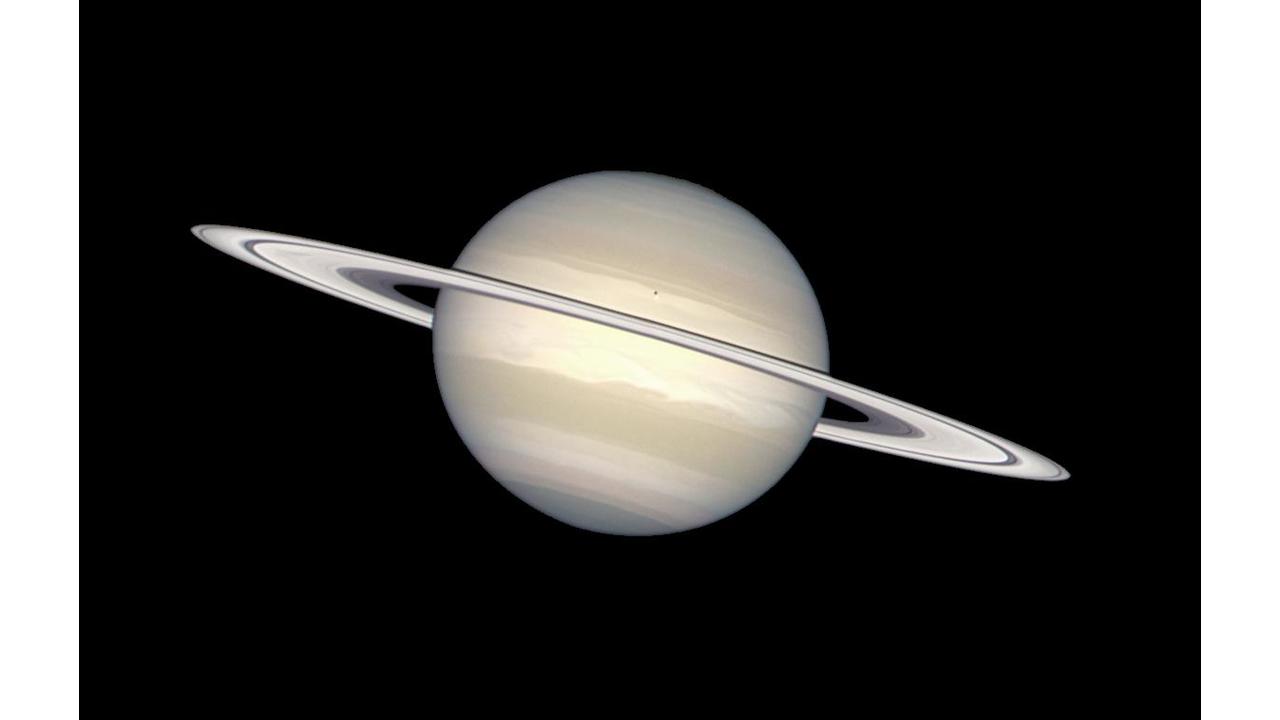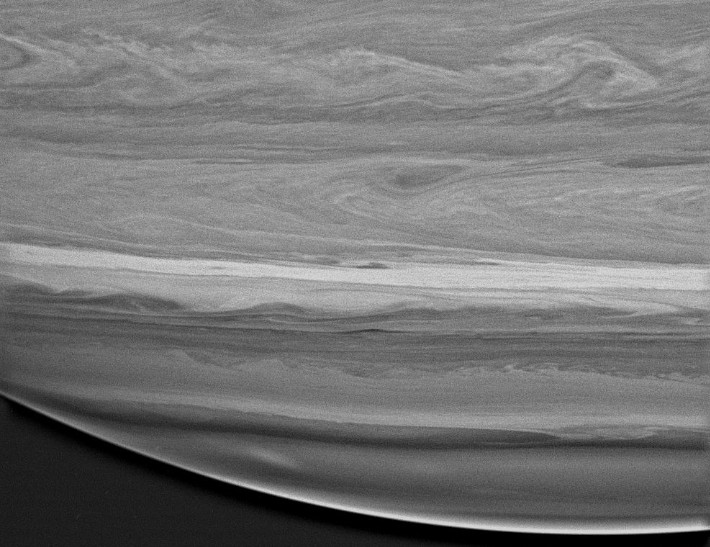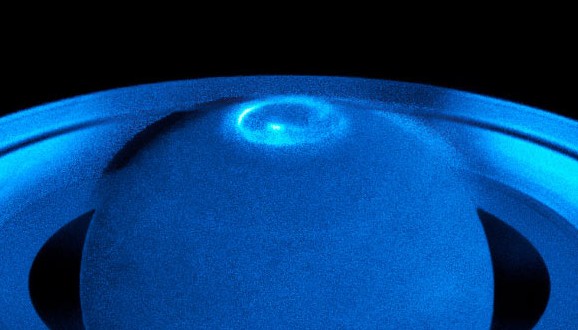Saturn Facts and Observing Tips
Saturn is probably the most beautiful planet in the Solar system, and observing it through a telescope is an unforgettable experience. The enchanting view of Saturn will impress any amateur astronomer. The planet is famous for its gorgeous rings. Jupiter, Uranus and Neptune have rings, too. But only Saturn rings are so big and bright that are easily observable through an amateur telescope.
Saturn Facts
Saturn is the second largest planet in our Solar System. Only Jupiter is bigger. The modern name of the planet came to us from ancient Rome. Saturn is named after the Roman god Saturnus, who was the god of agriculture. It is the sixth planet from the Sun, and the farthest planet from Earth that is visible to the naked eye. Like Jupiter, Saturn is a gas giant. It is made up mostly of hydrogen and helium. Because of this gaseous makeup, the planet has no true surface. Saturn is the only planet in the Solar System that is less dense than water. Saturn is mostly yellow when we look at it in a telescope because of the presence of ammonia crystals in the planet’s upper atmosphere. Saturn’s radius is about nine and a half times that of Earth. A day on Saturn lasts about 11 hours, which is more than half that of a day on Earth. Due to such a high rotation speed, Saturn is oblate: the planet 10 percent wider at the equator than it is high. Mass of Saturn is 95 times more than Earth’s. The planet orbits the Sun in more than 29 years. Saturn is about 10 times farther from the Sun than Earth.
The upper atmosphere of Saturn is moving very fast, and its look and behavior are similar to the atmosphere of Jupiter. Winds in the planets’ upper atmosphere are some of the fastest in the Solar System and can reach speeds of 1,800 kilometers per hour. For comparison, during the strongest hurricane on Earth, the wind speeds up to 400 kilometers (246 miles) per hour. The striped cloud bands of Saturn have pale pastel colors.

Image of Saturn in natural colors made by Hubble Space Telescope. Image credit: NASA.
Colors of the cloud bands are different because they have slightly different chemical compositions and temperatures. Above Saturn’s cloud layer is haze or smog that scatters sunlight, making planet’s visible cloud bands appear paler and blurry. The polar caps of the planet are gray because of the presence of ammonia ice in these regions. The difference in speeds between neighboring cloud bands leads to the formation of waves and vortices.

Highly detailed image of the part of Saturn’s southern hemisphere taken from Cassini spacecraft using infrared filter.
Saturn has a magnetic field which is generated by electrical current within the liquid metallic hydrogen around the planet’s core. The presence of a magnetic field leads to auroras in the polar regions of the planet. Saturn’s auroras can’t be seen in visible light (like Earth’s auroras), they are in the ultraviolet wavelength.

Auroras near Saturn’s northern pole in ultraviolet captured by Hubble’s Space Telescope. Image credit: NASA, ESA.
Magnetic field lines near the poles of Saturn enter the interior of the planet almost vertically. Charged particles of the solar wind, primarily protons, when falling to the planet, wind around these lines and emit light because they experience strong acceleration.
What is Saturn made of?
Saturn consists of approximately 75% hydrogen, 24% helium, and a small portion of other substances. Saturn’s atmosphere is 1,000 km thick. It consists mostly of hydrogen with a small portion of helium, methane, and ammonia. The further into Saturn we go the pressure becomes higher, and hydrogen gradually passes into the liquid phase. So under Saturn’s atmosphere there is the ocean of liquid hydrogen saturated with helium. Even deeper is a layer of liquid metallic hydrogen. In the central part of the planet, there is a core of ice, rocky material, iron and nickel.
It should be noted that today’s knowledge about the internal structure of Saturn may be not accurate. It is based on available data obtained mainly from space missions and physical models which take into account these data. For instance, we believe that there is liquid metallic hydrogen inside Saturn because the planet has a magnetic field that is created by it. This knowledge may be refined in the future as scientists obtain new data and build more accurate models.
Rings of Saturn
Saturn’s rings are the most prominent feature of the planet. Italian astronomer Galileo Galilei was the first to observe Saturn’s rings in his telescope with 20x magnification in 1610. However, he did not identify them as rings, and described them as “handles” or large moons on either side of the planet. Forty-five years later, in 1655, a Dutch astronomer Christiaan Huygens observed Saturn using a more powerful telescope and proposed that the planet was surrounded by a solid ring.
Today we know that the rings consist mainly of chunks of ice with a small portion of rock and dust. The rings gathered its material from comets, asteroids and moons. These chunks of ice range in size from micrometers to meters. The diameter of major Saturn rings is 270,000 km (170,000 miles) which is about 2 diameters of Jupiter. Astronomers divided the rings into seven groups which differ visually. The amazing thing is that, despite the fact that the diameter of the rings is huge, they are very thin. The rings’ thickness is about 100 meters. The visible rings of Saturn lie in the plane of the planet’s equator. Some of Saturn’s moons, including Pandora, Prometheus, Daphnis and Pan, act as shepherd moons helping rings to keep their form by gravitational influence.
Scientists proposed two hypotheses about how the rings were formed. One hypothesis suggests that rings are pieces of a destroyed moon of the planet. According to another hypothesis, the ring’s material is a part of the original nebula from which Saturn was formed.
The planet also has an invisible ring interior to the orbit of Saturn’s moon Phoebe. It was discovered in 2009 using NASA’s infrared Spitzer Space Telescope. Phoebe ring roughly lies in the plane of Saturn’s orbit. The particles of the ring originated from impacts of Phoebe with meteoroids.
Saturn Moons
Saturn has over 80 moons. We can see through a telescope seven brightest of them: Titan, Rhea, Dione, Tethys, Enceladus, Iapetus, Mimas. To observe them, you need a telescope with at least a 6-inch aperture. To find positions of the moons, you can use Stellarium or another astronomy app.
Titan is the second-largest moon in the Solar System. Only Jupiter’s Ganymede is greater. Titan is about 5,000 kilometers in diameter which is considerably larger than that of Earth’s Moon. It is also larger in size than the planet Mercury. Titan is mostly made up of ice and rock. It is the only moon in the Solar System with clouds and a dense atmosphere. Titan has a thick orange opaque atmosphere primarily composed of nitrogen. The moon has an underground ocean that makes it potentially capable of sustaining life.
Another notable Saturn’s moon is Enceladus. It is mostly covered by clean ice and has a subsurface ocean of liquid water also. Enceladus emits jets of water vapor, other gasses and dust from its south-pole region. Recent studies show that these jets provide material for Saturn’s E ring. Scientists found methane in these jets and suggested that it could be produced by microorganisms living in the subsurface ocean.
How to Observe Saturn
What does Saturn look like to the naked eye?
To the naked eye Saturn looks like a bright yellowish star. Saturn is not as bright as Venus, Mars or Jupiter. But it is brighter than Mercury. Sometimes it is easy to confuse the planet with a bright star.
How to find Saturn in the night sky?
The easy way to locate Saturn in the night sky is to use a planetarium app on your smartphone like Stellarium or SkySafari.
What telescope do you need to observe Saturn’s rings?
A 50mm aperture and 25x magnification are enough to see Saturn’s rings. With such a small telescope, you can also see the brightest planet’s moon Titan. A telescope with a larger aperture and higher magnification will reveal you more details of Saturn and its rings. If you have a telescope with small magnification and want to see Saturn closer you can use Barlow lens. There are Barlow lenses which double or triple telescope magnification.
What telescope is required to see Cassini division?
To observe Cassini division, the main gap between Saturn’s rings, a telescope with aperture at least 150 mm and with a magnification of 100x is required.
What telescope is good for observing Saturn’s moons?
Saturn’s moons are dim objects so to see more of them you need clear sky and low light pollution. The larger the aperture of the telescope, the more moons you can observe. A refractor telescope with a 60mm aperture will show you 2-4 brightest planet’s moons depending on darkness. A 150mm aperture telescope will reveal up to six Saturn’s visible moons: Titan, Rhea, Tethys, Dione, Enceladus, and Iapetus. With the help of a planetarium app, you can locate each of them.
What is the best amateur telescope to view Saturn?
To view Saturn and other planets, telescopes with high focal length are more suitable because they allow higher magnification to obtain a close-up look of the planet. The magnification of a telescope is the ratio of the focal length of the objective to the focal length of the eyepiece. So to increase magnification even more you can use an eyepiece with a small focal length. As for the optical system, Cassegrain scopes and apochromatic refractors are generally better for viewing Saturn than reflectors as they give better picture quality.
What is the best time to observe Saturn?
Best time to see Saturn is when it has the highest brightness or visual magnitude. The planet orbits the Sun with a period of 29.4 Earth years. So, each year there is a moment when Earth is between the Sun and Saturn. Astronomers say that Saturn at this moment is in opposition to the Sun. On this day of the year Saturn’s brightness is the highest for a given year, so the best time to observe Saturn is at, or near, this date. In the next 3 years, Saturn will have maximum brightness on August 29, 2023, September 8, 2024, and September 23, 2025.

Predicted visual magnitude of Saturn between January 2022 and January 2034 (From theskylive.com).
However, as the planet’s orbit is elliptical, the change of the brightness has a longer period which is about Saturn’s orbital period.

Predicted visual magnitude (brightness) of Saturn between 2020 and 2070 (From theskylive.com).
What is the best time to view Saturn’s rings?
Saturn rotates around an axis perpendicular to the plane of the orbit. Its inclination with respect to this axis is 26.7°. Therefore the visible aspect of Saturn’s rings changes. Every 13 to 15 years Earth passes through the plane of the rings and at these moments rings are closed. Now rings are closing and the next ring plane crossing will take place in 2025. After that, the rings will start to open out and will be fully open in May 2032.
How to Photograph Saturn
You can take wide-angle photos of the night sky where Saturn looks like a bright star with a DSLR camera or even smartphone camera and tripod. To get an up-close look of the planet, you should use a telescope. A telescope not only enlarges the image, but also collects more light and makes the image more detailed. There are a few ways to photograph Saturn with a telescope. One of them is eyepiece projection photography when a camera without a lens is attached to the eyepiece. With a dedicated astronomical camera, you will get even better quality pictures. Another technique in astrophotography is image stacking. Series of images are stacked using special software to filter out noise and to get a more detailed picture of a planet.
